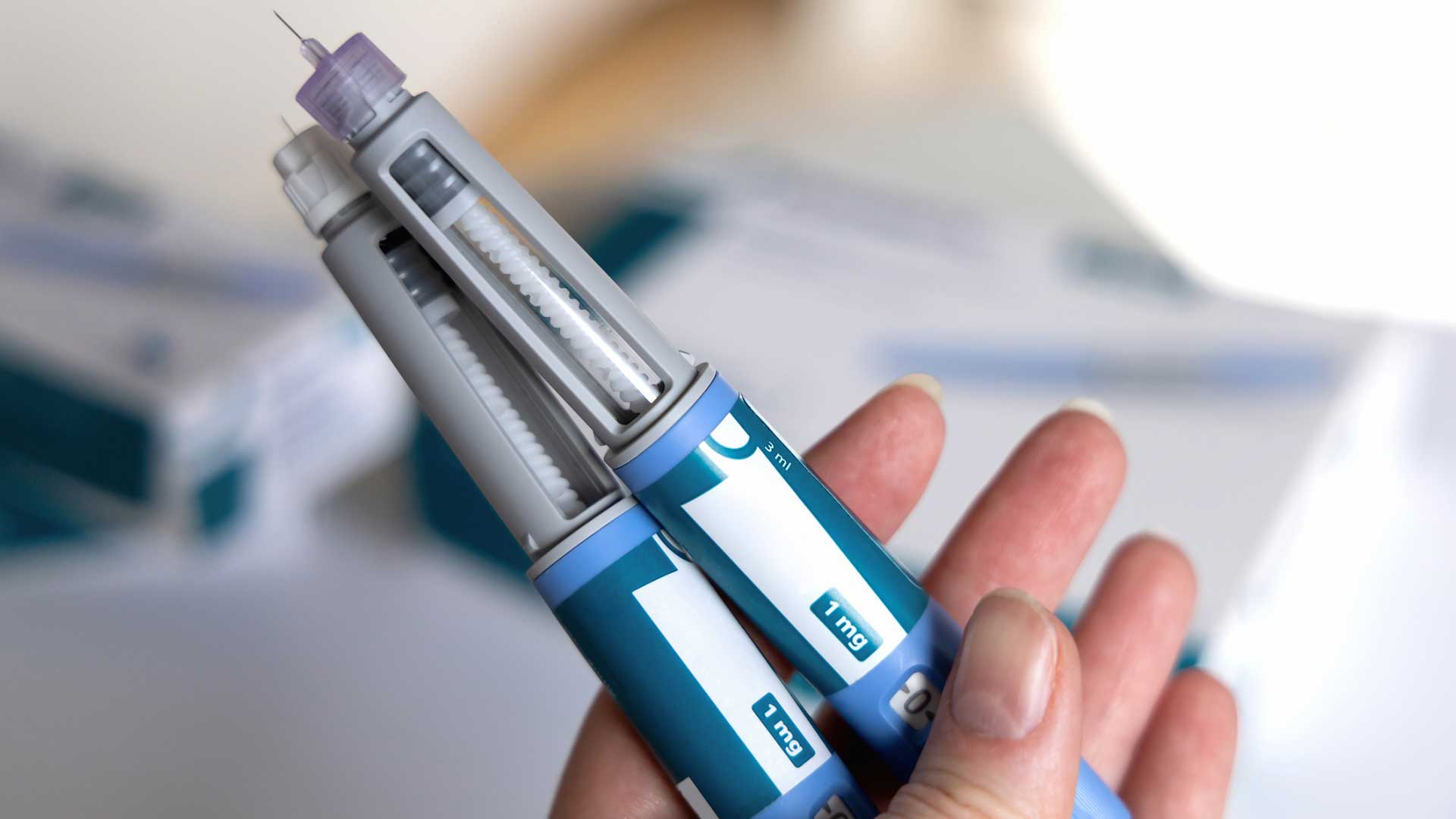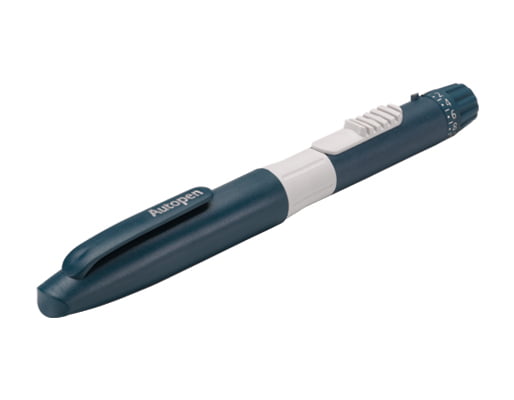If you or your child take insulin, you will probably have used an insulin pen.
But are there better types of insulin pens? Do some insulin pens suit children with T1D better than others? What should you consider when choosing one? And can anything go wrong?
Perhaps you remember the old method of insulin delivery. A vial of insulin and a bag of syringes. Those days have long gone. Today, most rapid and all slow-working insulins are administered with pens. Pens are convenient, accurate, easy to use and don’t take up much space in a bag. If you don’t use an insulin pump, you’ll likely use a pen.
Types of Insulin Pens Available
There are three types of insulin pens on the market. The simplicity of the pen mechanism means we shouldn’t expect a fourth type in the near future.
1. Disposable Insulin Pens
Most insulin manufacturers provide preloaded insulin pens that already contain an insulin cartridge. However, you might need to ask your doctor for a specific prescription and check with your health insurer because disposable pens cost more to produce than reusable ones.
If you’re environmentally conscious, disposable pens might not be the right choice. You can’t reuse a disposable pen. Naturally, you also need to buy separate single-use needles.
2. Reusable Insulin Pens
If you receive your insulin cartridges in boxes, you’ll need a reusable pen. Reusable pens are the best choice if you’re interested in the environment as the pens aren’t thrown away after a cartridge is empty – you simply replace the cartridge.
Reusable insulin pens are designed for multiple uses with replaceable insulin cartridges. They can be used for any insulin type that comes in cartridge form – in other words, all insulin types. Another advantage of reusable pens is that they tend to be made of more sturdy materials like aluminum and can take a little more punishment than disposable ones.
3. Smart Insulin Pens
Smart insulin pens (SIPs) use internal technology that helps you or your child with diabetes achieve better blood sugar management.
SIPs can connect to several apps. Thanks to Gluroo’s ability to import data from Glooko and Apple HealthKit, as well as DIY Loop and other tools that write into Nightscout backends (via Gluroo Global Connect), you can connect smart pen data to Gluroo. xDrip+ allows direct integrations with Novopen, InPen and Pendiq SIPs.
Multiple studies show that using a connected pen improves diabetes management across the board.
Incorporated pen technology allows PWD to:
- Track doses: the pen records, stores and shares time and dose data for every injection;
- Alerts: all current smart pens have reminder features – no more forgetting to take insulin even when your phone’s switched off;
- Internal calculations: some SIPs feature calculation algorithms that use data such as carbs on board, glucose levels and even insulin sensitivity (the same data Gluroo uses to help keep daily glucose levels safe and stable). With this data, a good smart insulin pen can suggest the correct number of units;
- Insights: some pens feature data analysis capabilities to give PWD better overviews of diabetes management patterns, like when to expect a high or low result;
- Connectivity via Bluetooth allows integration with apps, CGMs and insulin pumps. A diabetes care team can receive real-time insulin dosage data.
How to Use an Insulin Pen: Step-by-Step
Specific steps should be taken when using a reusable insulin pen:
- Take off the pen cap;
- Twist the pen body open;
- If the pen has been used before, a long rod with a round plate at one end will stick out of the non-hollow section. This is the piston rod that pushes insulin through the needle. It will need to be pushed gently back to make enough space for the next cartridge;
- Take an insulin cartridge from its packaging and insert it so that the rubber stopper is at the smaller end of the hollow part;
- Twist the insulin pen body closed again;
- Take an insulin pen needle from its packaging and twist it onto the end of the pen where the rubber stopper of the insulin cartridge can be seen. Twist it all the way;
- Test the pen and needle by turning the dial to 2 or 3 units – press the dial and check that insulin comes out of the needle – it can travel quite a distance;
- Carefully place the pen cap on the pen body without knocking the needle.
With a disposable insulin pen, you don’t need to insert a cartridge – it’s already in place. Simply follow steps 5 to 7.
Hygiene is extremely important. Disinfecting the injection site and not touching the needle with your fingers (after washing your hands) is vital. Many PWDs leave single-use needles on the pen for longer which is never advised. Firstly, the pen cap is not sterile. Secondly, today’s needles are extremely fine and very easily damaged – just one injection into the softest part of the abdomen bends and warps the needle.
In fact, a common complaint among PWD pen users is that no insulin comes through the needle. The reason for this is practically always multi use of single-use needles. In these cases, the needle becomes so warped, that insulin can’t move through it.
Of course, as there are so many added extras in a smart pen, it isn’t a disposable option. Smart insulin pens are actually a subcategory of reusable insulin pens.
The steps for using a SIP are a little more complex:
- Download the appropriate manufacturer’s app and pair it with the pen (the manufacturer’s website will tell you how);
- Insert the cartridge and screw on a fresh needle;
- Test the insulin flow (2-unit dose);
- Inject the required dose (as with any insulin pen);
- Enable NFC on your chosen device – like you do with a first-time scan of a CGM – to share data. You can now view all dosing information on your chosen (compatible) app.
Best Insulin Pens For T1D
Which is the best insulin pen for you or your child with type 1 diabetes? Let’s have a quick look at the ones PWDs like the most, in no particular order.
1. Disposable Insulin Pens
Disposable pens might not be the most environmentally friendly option, but for certain PWD groups, they are the best option. For PWD with neuropathy, for example, inserting the cartridge is time-consuming and frustrating (screwing on the needle is hard enough). Young children are another group that might not appreciate a separate cartridge, as are the elderly.
Newly diagnosed PWD have lots of information to learn and can move to a reusable pen when feeling more confident. Those with bad eyesight might prefer a disposable option, too. Just keep in mind that there’s no choice of disposable pen – you’re limited to the pen that contains your prescribed insulin type.
2. AllStar Pro
The AllStar Pro is a reusable insulin pen manufactured by Sanofi and a greener option for the groups described immediately above. Users report that the sound of the clicks when turning the dial is clearer (not louder) than other types of pens. Those with dexterity or visual problems find cartridge insertion to be much less fiddly. You should only use Sanofi insulins with this extremely easy-to-use pen.
3. Autopen
The Autopen is another reusable pen manufactured by Owen Mumford. Unusually, it has a spring-loaded dosing button located on the side of the pen that requires less force than a dial system. Particularly good for PWD with arthritis of the hands, for example. The Autopen Class is compatible with Lilly and Wockhardt insulin cartridges. For Sanofi cartridges, try the Autopen 24.
4. NovoPen Echo Plus
Made by Novo Nordisk, the NovoPen Echo Plus is one of the most popular SIPs in Europe. It has the added value of offering half-unit increments for PWD who are sensitive to small amounts of insulin. Some users say it’s quite a heavy and clumsy pen, but at the same time most are very pleased with this insulin pen’s reliability and its smart features. Only recommended for Novo Nordisk insulin cartridges.
Frequently Asked Questions: Insulin Pens
1. Does An Insulin Pen Need to Be Refrigerated?
An insulin pen will only need to be refrigerated if there’s insulin inside the pen and the outside temperature is over 30°C (86°F). That’s a lot warmer than when you store insulin cartridges. The small amount of insulin carried in a pen must be kept within a 2–30°C (36–86°F) temperature range and away from direct sunlight. When being stored for later use (like a box of cartridges), the storage temperature recommendation takes a nosedive to 2–8°C (36–46°F) or fridge temperature.
2. How Often Do You Change the Needle On The Pen?
A single-use needle is exactly that – good for one injection. Looking at pictures of used needles under a microscope it’s easy to understand why. The jagged, bent edges of a once-used needle cause trauma at a microscopic scale but can eventually cause permanent lumps and bumps of subcutaneous fat at the injection site.
At a push, a needle can be used twice (with extra attention to hygiene) but this should definitely not become a habit. A used needle and the tiny quantity of insulin inside it can quickly become contaminated, too. In fact, you should only ever take a needle out of its sterile packaging just before administering insulin to lower infection risk.
3. Can Insulin Pens Be Used for Basal and Bolus Doses?
You can find insulin pens for either type or both types. However, by both I mean mixed insulins like Insuman Comb 25 or Humalog Mix25. Carefully check reusable pen information to make sure a particular pen suits your insulin brand. Unlike insulin pumps, you don’t use rapid-working insulin for basal doses when you use pens. So, unless your doctor prescribes you mixed insulin, you’ll need 2 pens.
Insulin Pens Can Seem Confusing But…
While it might seem that insulin pen choices are broad and potentially confusing, this isn’t the case. Firstly, most pens are only compatible with specific insulin brands or a very tiny handful of different brands. In other words, you have the choice of disposable, analog reusable or smart reusable. That makes your shortlist so much simpler.
I wholly recommend a smart insulin pen. Alerts mean you never forget a dose and the pen memory function means you’ll never again have to ask yourself if you’ve administered your insulin or not. It’s also a great way of keeping an extra eye on how your older child manages his or her insulin therapy.
By sharing pen data, you can add dosing information to any good diabetes management app without lifting a finger.
Smart pens improve blood glucose control for multiple reasons. However, if you decide to use a regular disposable or reusable insulin pen, simply input your doses into your diabetes management app manually and keep within target ranges that way – the combination of CGM and a diabetes management app is equally beneficial to diabetic health.
But ultimately, whatever insulin pen you choose, it won’t be the wrong choice!







